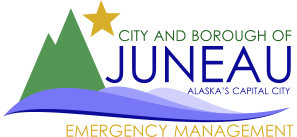Avalanche Advisory Archive Pre-2016
| Date Issued: | 2012-01-13 |
|---|---|
| Danger: | 2 |
| Trend: | 2 |
| Probability: | 3 |
| Size: | 3 |
| Problem: | 0 |
| Discussion: | The National Weather Service Forecasts- TODAY...SNOW SHOWERS. SNOW ACCUMULATION 1 TO 2 INCHES. TONIGHT...DECREASING CLOUDS. SCATTERED SNOW SHOWERS IN THE SATURDAY...PARTLY CLOUDY IN THE MORNING THEN BECOMING MOSTLY SUNNY. LOCALLY WINDY...COLDER. HIGHS AROUND 23. NORTHEAST WIND 15 TO 25 MPH INCREASING TO 35 MPH WITH GUSTS TO AROUND 45 MPH IN THE AFTERNOON. STRONGEST WIND NEAR INTERIOR PASSES...DOWNTOWN JUNEAU AND DOUGLAS. The last few days we had quite a storm move through... Over the last 66 hours we received 96mm of precipitation (nearly 4\") which left nearly 2' of new snow at the Mt Roberts Tram Summit elevation. At the Eaglecrest UAS mid mountain site that was closer to 45cm (18\"). Temperatures rose throughout most of the storm... 7 degrees in the first 24 hours then another 3 in the next 24 hours. Yesterday those mid mountain temperatures were very close to freezing otherwise our snow depth would have been much greater. But recognize that closer to summit elevations we received additional snow do to colder temperatures. Winds were quite strong during this entire event. ranging from 25-70mph in the first 24 hours, dropping of to 25-45 over the next 24 hours. Yesterday we saw winds pick up to 25-45 with a few hours of winds gusting to 80mph! This created a lot of scouring in places and placed tremendous load in other places. Yesterday afternoon the winds slowed down and the precip started to slow. Yesterday Evening winds died off more down to 10-25mph and the precip quit altogether. Since that time the temperatures have started to fall. They dropped by about 6degrees overnight starting to lock up the lower snowpack that was quite wet during the event. But the upper mountain areas will still have quite a bit of new snow. There is great spatial variability. The snowpack has an interesting sandwich if layers. In some places more stable than in others. Yesterday lots of avalanche activity was witnessed. Human triggered avalanches were widespread. Cornices were quite weak. When those cornices fell the too started avalanches. These avalanches were mostly from 4-12\" yet much larger avalanches occured in places. They were propagating widely as well, often several hundred feet wide. Natural avalanches were also sighted in the region. Thane road had a very small natural avalanche. Probably from a lower starting zone caused by the warm temps and rains. But much of the upper snowpack remains and is still probably quite sensative. Up near Eaglecrest on Douglas Island large natural avalanches were also reported. One report came in of an avalanche that was several hundred feet wide and perhaps as deep as 3' bring down tons of snow and creating a large powder cloud. Today things will remain sensative in areas. Winds have shifted direction placing windload in new locations. We may see a bit more new snow. But for the most part the trigger for these natural avalanches is being slowly removed. Human triggered avalanches remain possible in areas. Avalanche Danger is Moderate at this time. Natural avalanches unlikely, potentially destructive avalanches unlikely to come near or reach developed areas. Human triggered avalanches possible. Over the next 24 hours danger will continue to decrease yet be aware in places human triggered avalanches will remain possible for several days. Especially with larger triggers like multiple people on a slope... or by snowmobiles. Use caution in the mountains over the next few days. Be conservative. Limit your exposure. Stick to low angle slopes. Avoid terrain traps, cliffs and unsupported convex slopes. Time is our friend. The patient man enjoys powder for a lifetime... the impatient man often finds himself in avalanches sooner... than later... Have a great day everyone. But remember... You need to do everything you can today to stay safe. Dont head into the backcountry without your Avalanche Transceiver, Probe, and Shovel. As well as having a well trained partner who is not pushing you to do things you shouldnt do. Remember if you choose to play in the mountains today... LCES- HAVE A GREAT DAY! |
| Tip: | AVALANCHE SAFETY CHECK LIST BEFORE YOU LEAVE IN THE AREA- Human Factors - Are there issues that overshadow wise decisions? Terrain - Is it suitable for avalanches? Snowpack - Might it slide? Is it unstable? Other Clues of Instability Weather - Trends in weather are most important; be aware of potential changes with elevation. TRAVEL - IF CAUGHT - RESCUE - |
